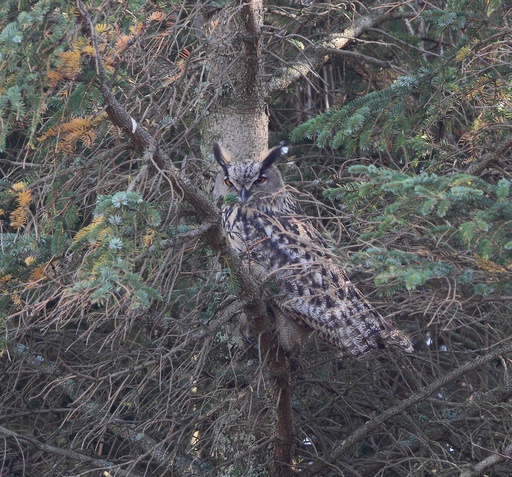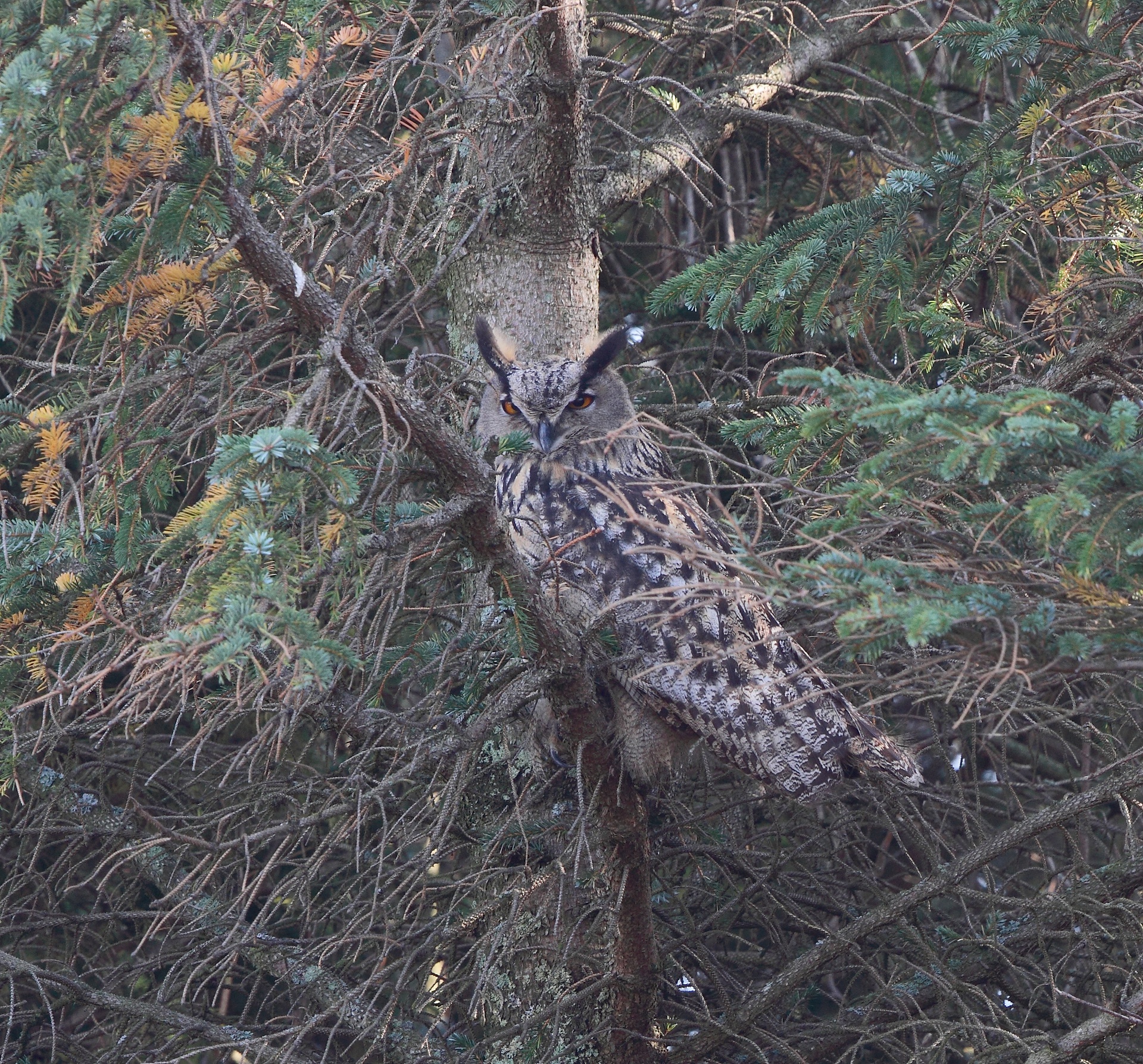The Eurasian eagle-owl (Bubo bubo) is a species of eagle-owl that resides in much of Eurasia. It is also called the Uhu and it is occasionally abbreviated to just the eagle-owl in Europe. It is one of the largest species of owl, and females can grow to a total length of 75 cm (30 in), with a wingspan of 188 cm (6 ft 2 in), with males being slightly smaller. This bird has distinctive ear tufts, with upper parts that are mottled with darker blackish colouring and tawny. The wings and tail are barred. The underparts are a variably hued buff, streaked with darker colouring. The facial disc is not very visible and the orange eyes are distinctive.The Eurasian eagle-owl is found in many habitats, but is mostly a bird of mountainous regions or other rocky areas, often those near varied woodland edge and shrubby areas both with openings and/or wetlands to hunt a majority of their prey. Additionally, they inhabit coniferous forests, steppes, and other areas at varied elevations that are typically relatively remote. Eurasian eagle-owls are occasionally found amongst farmland and in park-like settings within European cities, even rarely within busier urban areas. This eagle-owl is a mostly nocturnal predator, hunting for a range of different prey species. Predominantly, their diet is comprised by small mammals such as rodents and rabbits, but they also prey on larger mammals and birds of varying sizes. More secondary prey can include reptiles, amphibians, fish, large insects and other assorted invertebrates. The species typically breeds on cliff ledges, in gullies, among rocks, or in other concealed locations. The nest is a scrape containing a clutch of two eggs typically, which are laid at intervals and hatch at different times. The female incubates the eggs and broods the young, and the male provides food for her, and when they hatch, for the nestlings, as well. Continuing parental care for the young is provided by both adults for about five months. At least 12 subspecies of the Eurasian eagle-owls are described.In addition to being one of the largest living species of owl, the Eurasian eagle-owl is also one of the most widely distributed. With a total range in Europe and Asia of about 32 million km2 (12 million sq mi) and a total population estimated to be between 250,000 and 2.5 million, the IUCN lists the bird's conservation status as being of least concern. The vast majority of eagle-owls live in Continental Europe/Scandinavia, Russia (which is almost certainly where the peak numbers and diversity of race occurs), and Central Asia. More minor populations exist in Anatolia, the northern Middle East, the montane upper part of South Asia and in China; in addition, an estimated 12 to 40 pairs are thought to reside in the United Kingdom as of 2016 (where they are arguably non-native), a number which may be on the rise. Tame eagle-owls have occasionally been used in pest control because of their size to deter large birds such as gulls from nesting.
Font: Wikipedia
Observation portals:




